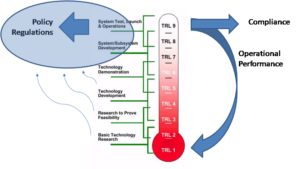Feedback from the 38th AIVC & 4th venticool conference: Summary of the ventilative cooling track
The joint 38th AIVC, 6th TightVent and 4th venticool Conference on ‘Ventilating Healthy Low-energy Buildings’ was held in Nottingham, UK, 13-14 September 2017. The programme consisted of plenary sessions and 3 parallel tracks, one devoted to Ventilative Cooling in four sessions (20 papers) and 17 papers in poster sessions. Two sessions were topical, proposed by IEA EBC Annex 62, plus one discussion session. One topical session focused on case-studies [6, 18, 23-25] including houses, offices, a large space and shopping malls. O’Sullivan [26] presented preliminary conclusions (~20 buildings), completed post 2010 studied by Annex 62 participants. The second topical session was devoted to Indicators and Strategies/Components. Flourentzou [37] presented energy performance indicators with following papers [15, 31-34] on experiences from offices to renovated dwellings to supermarkets and shopping malls where potential is high. Peter Holzer chaired the discussion session on the proposal for a new IEA EBC Annex on Resilient Cooling.
The paragraphs that follow attempt to group papers according to Technology Readiness Levels (TRL) – Figure 1, and compare with TRLs of those presented two years before at the 36th AIVC conference in Madrid (35 papers).

Figure 1: Technology Readiness Levels; adapted from: NASA Technology Readiness Levels – https://en.wikipedia.org/wiki/Technology_readiness_level
- Low TRL: 16 papers were presented on simplified design tools and inter-model comparison of more complex tools for better prediction with emphasis on overheating dissipation. In many cases only boundary conditions are different – i.e. external conditions (weather data) and internal conditions (use of space) [1-16]. More papers were presented (11 in Madrid) and were similar in scope.
- Mid TRL: 6 papers presented performance assessment of prototypes through laboratory experiments and/or simulation. A variety of components was presented such as phase change materials and radiant panels combined with ventilation [19, 20], adjustable jets [21], façade improvement [22] bulk air flow measurements [18] including hot climates [17]. Number of papers was less than in Madrid (10) with more emphasis on experimental results.
- High TRL – 14 papers presented performance verification with data from operational buildings [23-36] for a variety of buildings types. In Madrid the number was similar (13) where in general measurements did not include ventilation/air flow but parameters related to environmental and thermal comfort performance. In Nottingham, more papers included ventilation/air flow measurements. Energy indicators are still investigated but work on health impact has increased.
The need for more explicit reference to Ventilative cooling within building energy performance regulations was discussed [37] with more work initiated by IEA EBC Annex 62.
In conclusion, based on papers presented, work towards more explicit reference to ventilative cooling in energy regulations has progressed, evidence from operational buildings has progressed including health impacts but less work on component development was reported.
The complete article including the full list of referenced papers is available here.
by Maria Kolokotroni, Brunel University London
